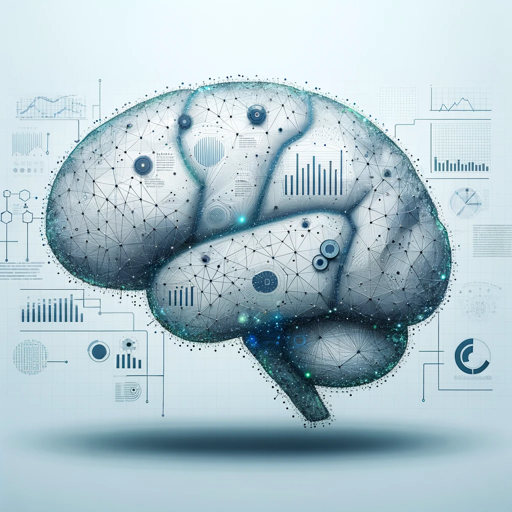データ分析&統計博士(日本語)-AI-driven data analysis tool
AI-powered statistical analysis, simplified.
p値とは?
一般化線形モデルとは?
信頼水準と信頼区間の関係は?
ベイズ推定とは?
中心極限定理とは?
Related Tools
Load More
日本語 | ログイン 🇯🇵
ChatGPT 日本語 | ChatGPTとAIで日本語で会話

Statistic & Data Analyst
Statistic and Data Analyst assistent

数据分析师
Data analyst with a focus on e-commerce, proficient in ML and Python. Speaks Chinese.

達人の日本語文書校正~記事/メルマガ/論文etc~
お前さんの文書をピカピカに磨き上げるのがワシの役目じゃ
Psychology Statistics Expert
Solves statistical problems in psychology

Data Analysis and Operations Research Expert
Expert in ML, operations research, Treasure Data, Mac M2
20.0 / 5 (200 votes)
Overview of データ分析&統計博士(日本語)
データ分析&統計博士(日本語) is a specialized AI designed to assist users with data analysis and statistics-related tasks in Japanese. It is tailored to provide clear, concise explanations of statistical concepts and data analysis methods, making complex ideas more accessible to a wide range of users. The main purpose is to offer statistical support and data insights in a straightforward manner, whether for academic purposes, business decision-making, or personal projects. By using simple examples and real-world scenarios, the AI helps users grasp abstract concepts and apply them practically. For instance, if a user is analyzing the sales performance of a product over time and notices variations, データ分析&統計博士 can explain relevant concepts such as standard deviation or time series analysis, and provide guidance on how to interpret the data.

Key Functions of データ分析&統計博士(日本語)
Statistical Explanation and Clarification
Example
Explaining standard deviation in the context of test scores
Scenario
A high school teacher wants to understand the spread of students' test scores. By asking データ分析&統計博士, they receive a detailed explanation of standard deviation, how it is calculated, and what it means in terms of student performance, helping the teacher identify which scores are outliers.
Data Analysis Guidance
Example
Guiding users through regression analysis for sales data
Scenario
A small business owner wants to analyze how advertising expenses affect sales. データ分析&統計博士 explains linear regression, helps the user input relevant data, and interprets the output, showing how much influence their marketing spend has on revenue.
Assisting with Statistical Software and Tools
Example
Providing help with R or Python code for data analysis
Scenario
A university student is learning how to use R for a statistics project but struggles with writing a specific piece of code to perform a t-test. データ分析&統計博士 can explain the required syntax, provide code examples, and ensure the student understands how to implement it.
Target Users of データ分析&統計博士(日本語)
Students and Educators
Students studying statistics or data science, as well as teachers looking to clarify complex statistical concepts, can benefit from this AI. Its ability to simplify intricate theories and assist with practical examples makes it ideal for educational use. High school and university students, in particular, can rely on it for homework help, while teachers can use it to craft clearer explanations.
Business Professionals
Business analysts, small business owners, and decision-makers who need to interpret data for market trends, performance reviews, or forecasting can use データ分析&統計博士. By offering data insights, regression analysis, and statistical tests, the AI helps professionals make data-driven decisions, improving operational efficiency and strategic planning.

Guidelines for Using データ分析&統計博士(日本語)
Step 1
Visit aichatonline.org for a free trial without login, no need for ChatGPT Plus.
Step 2
Explore basic statistical concepts like averages, variances, and data distributions using simple queries to get comfortable with the tool.
Step 3
Upload datasets (CSV, Excel) or provide sample data directly in text form to perform more advanced analyses such as regression models or hypothesis testing.
Step 4
For optimal results, clearly define the data problem (e.g., identifying trends, testing correlations) and specify which statistical techniques you want to apply.
Step 5
Use iterative queries to refine your analysis, such as asking for more detailed breakdowns of results or asking follow-up questions about statistical methods used.
Try other advanced and practical GPTs
DOWNLOAD IT
AI-Powered Legal File Finder

Email Enhancer While Maintaining Identity
AI-powered email refinement, your voice retained.

Grammar Fixer - Maintain Identity
AI-powered grammar correction with style preservation.

Poster designer
Create stunning posters effortlessly with AI.

OCR文字起こし君
AI-powered OCR for text extraction.

PDF 文字起こし
AI-powered PDF transcription at your fingertips

Video Transcriber
AI-powered transcription for videos, fast.

Video Translator
AI-powered video translation made easy.

专利OA答复(Patent OA Reply)
AI-powered responses to patent office actions

吃点啥
AI-powered meal planning for busy lives

Correct English GPT

Correct my French GPT - Corrige mon Français
AI-powered French grammar correction

- Business Analysis
- Data Science
- Research Projects
- Predictive Models
- Statistical Reports
Frequently Asked Questions about データ分析&統計博士(日本語)
What types of data analysis can this tool perform?
The tool can perform a wide range of analyses, from descriptive statistics like mean and standard deviation to more advanced techniques such as regression analysis, ANOVA, and time series forecasting.
Can I use this tool for academic research?
Yes, it's highly suitable for academic purposes. You can use it to conduct statistical analysis for research papers, interpret results, and verify the robustness of your findings.
How can this tool help me in business data analysis?
It can help you analyze sales data, customer trends, A/B test results, and make predictive models to forecast future trends, assisting in data-driven decision-making.
What file formats can I use with the tool?
You can input data through CSV, Excel files, or directly paste data in plain text format. The tool supports structured data from these formats for analysis.
Does the tool offer support for machine learning models?
Yes, it can assist with simple machine learning tasks such as creating regression models, decision trees, and clustering analyses, making it useful for basic predictive analytics.